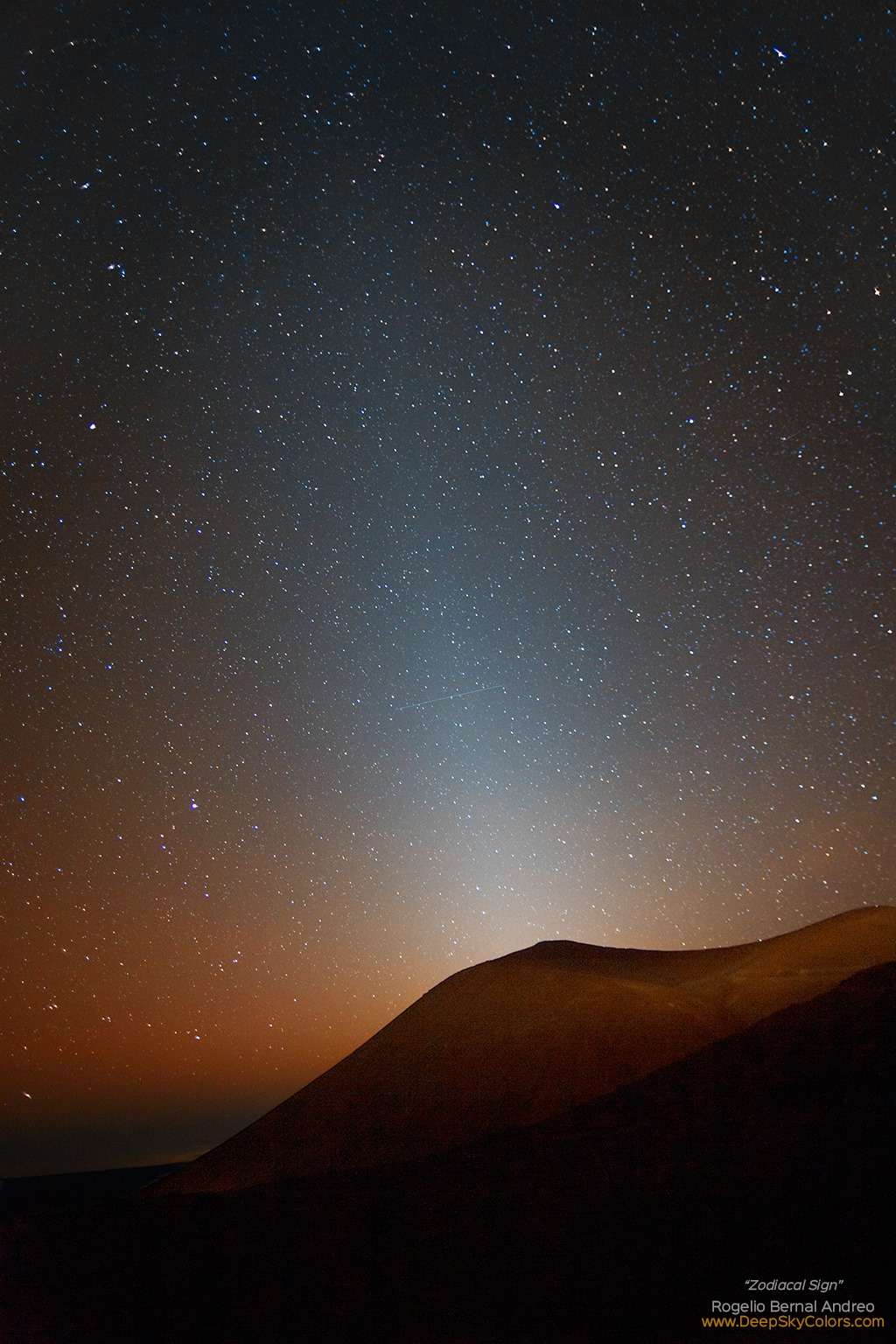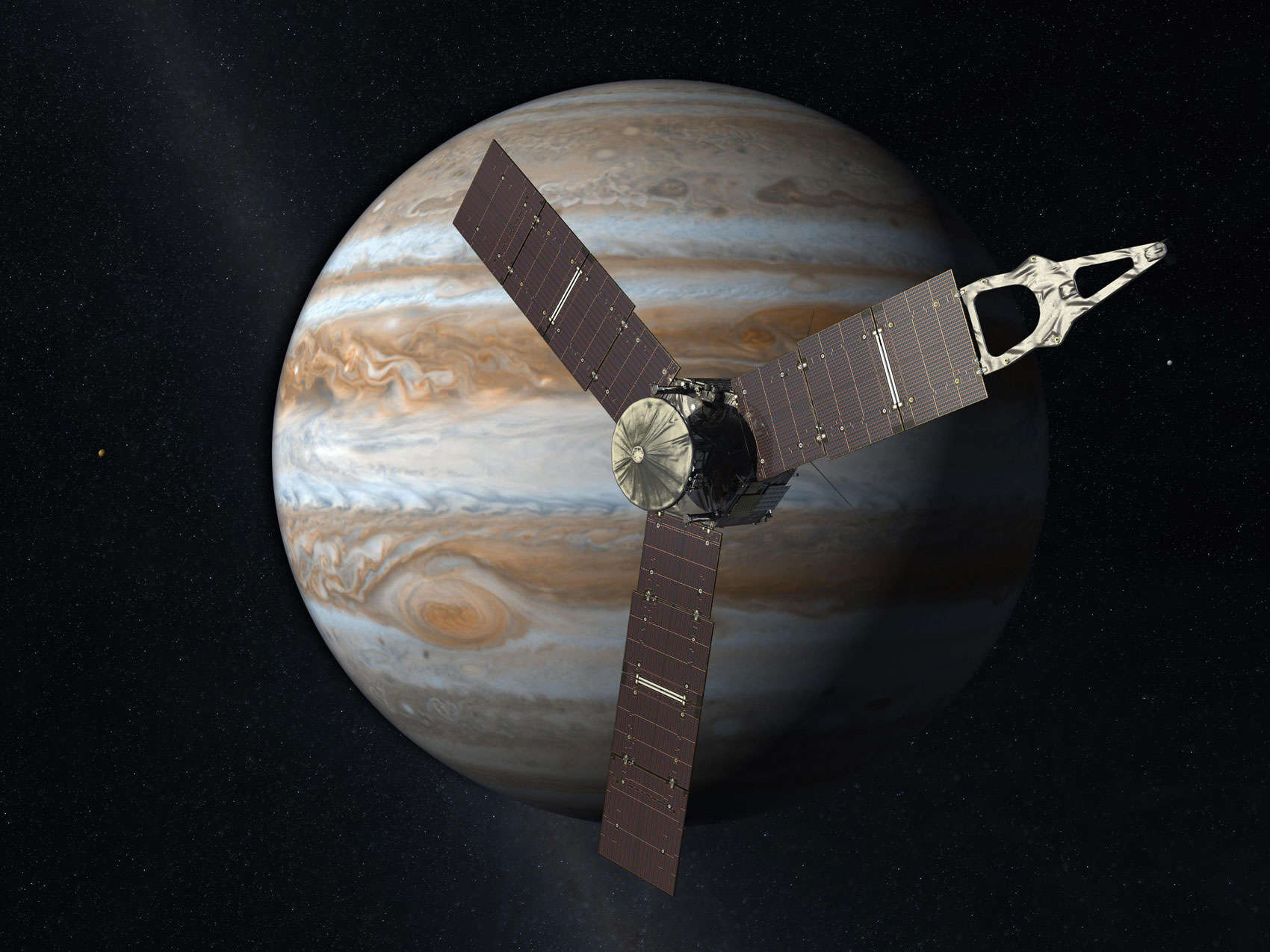Create a free profile to get unlimited access to exclusive videos, sweepstakes, and more!
Mars may be sneezing out dust into the solar system that’s visible from Earth

If you go outside at night in a dark spot with no moonlight, you may spot a faint glow in the sky that follows the zodiac constellations. This glow is called the zodiacal (zo-DIE-uh-cull) light, and is caused by tiny particles of dust orbiting the Sun outside Earth’s orbit. They faintly reflect sunlight back to us, generally barely visible by eye though obvious enough in photos.
What’s not obvious is the source of that dust. It was once thought to be from asteroids; big rocks in the main asteroid belt between Mars and Jupiter sometimes collide, and the dust generated in such an impact would spread out and create the zodiacal glow. Later research indicated that instead it was coming from what are called Jupiter family comets, which are comets with short periods; they came from deeper out in the solar system, passed Jupiter, and its mighty gravity swung them down close to the Sun. When they warm up they shed ice and dust, and that dust is what makes zodiacal light.
But wait: A paper just published has turned this all on its head, and found that the most likely source of the zodiacal dust is… Mars!
That’s pretty weird, and to be honest I’m not 100% convinced. But the findings are very interesting. Even better, they come from a mission to Jupiter.
The Juno spacecraft launched from Earth in 2011. It took a circuitous route to Jupiter, first making a big elliptical loop into the asteroid belt and then back down to Earth. It passed our fair world, which gave Juno a gravity assist boost, flinging it out toward Jupiter. It arrived at the gas giant in 2016, and has been orbiting the planet ever since.
Many missions sent to other planets have a dust detector on them, to sense when the spacecraft is impacted by interplanetary particles. Juno, however, does not. Not an official one, at least. What it does have are three very large solar panels totaling an area of sixty square meters (they’re big to compensate for diminished sunlight at Jupiter’s orbit, which is only 4% as strong as it is at Earth). They present a big target for dust impacts, actually over a thousand times the size dust detectors usually are.
A typical dust particle will hit the panels at about 5 kilometers per second, or 18,000 km/hr. That’s fast. Even a tiny particle weighing in at 15 nanograms will cause a teeny piece of the panel to get blasted off (what scientists called spallation).
OK, great! But how do you detect that? This is where some fun serendipity comes in.
There are four cameras mounted on Juno that track stars, used for spacecraft orientation. One of these cameras was left on during the cruise stage of Juno’s flight to Jupiter, in the hopes of catching an undiscovered asteroid or two on the way.
What it found were over 15,000 streaks in the sky due to bits of interplanetary debris slamming in to the solar panels and spallating off bits of them! The scientists knew that’s what these were because the spacecraft spins for stabilization, so in the images it looks like the spallated bits are spiraling away. Very cool.
When scientists on Earth analyzed the data, they found that the impacts occurred for the most part between the orbit of Earth and a distance about twice that from the Sun (roughly 150 – 300 million km). They saw fewer occurring when Juno was in the asteroid belt, implying the asteroids actually soak up the particles somehow. Earth does as well, clearing them away from its orbit. Mars, however, is too small to do that. And farther out than 300 million km Jupiter’s gravity clears the orbits of particles as well.
This strongly implies that the source of the dust is between those distances. And the only source they could think of that fits that bill is Mars, which orbits about 220 million km from the Sun.
To see if this made sense, they took their observations of the dust and created a computer model of how dust would behave if it came from Mars. What they found seems to fit the observed zodiacal light behavior pretty well.
That’s bizarre. With all those obvious possible sources (asteroids and comets), why would Mars be the font of this material? To be frank, they don’t know. The scientists write that they don’t understand how Mars could do this; its escape velocity is too high for dust from the surface to escape into space. It’s easier to get dust from impacts on its two small moons, Phobos and Deimos, but even then they orbit close enough to Mars that getting dust into interplanetary space from them is very difficult, too. The researchers are hoping other scientists can help them figure that out.
To be honest that’s a big reason I’m still skeptical. For one thing, comets are such an obvious source, and the numbers of them we see are enough to make the dust observed.
And, since there’s no understood mechanism of getting dust from Mars, well, that’s a decent reason to be skeptical.
But that doesn’t mean they’re wrong! Their models do seem to make a good prediction of dust behavior, so it would be wrong to dismiss this idea. I think reserving judgment for now is prudent, at least until a generation mechanism is found, but keeping an open mind is best at the moment.
Still, this is a fascinating idea. And what gets me more is the method they used to find all this. A series of happy engineering design accidents that resulted in some pretty good data, and a very surprising result! It makes me hope that future missions to the outer solar system set up something similar, so we can get more data.
On a personal note, I’ve never seen the zodiacal light; it’s on my bucket list of things I want to see for myself someday. I wonder if, by the time I do, we’ll have a better understanding of where it comes from?





























